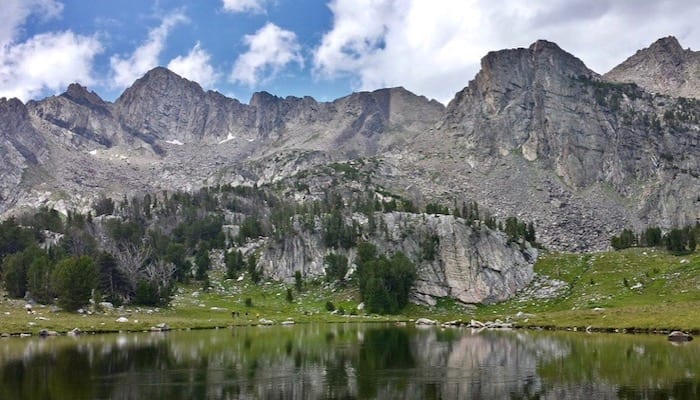A novel prevention for acute mountain sickness
Every now and then someone thinks outside the box and causes a change in medical care. This is one of those things. I was alerted to this letter to the editor by the always excellent R&R in the Fast Lane, and when I went to the original source, I was astounded. Not many people would consider inducing pneumoperitoneum as a treatment for anything.
The letter is published almost like an abstract, and does a good job of explaining the problems that people run into when they have to go to high altitudes on short notice, such as rescuers of natural disaster victims like the one recently experienced in Nepal. And while I agree with them that there may not be time for people to go through any of the the classically used acclimation methods, I’m not sure that we should extrapolate the data that says injecting 20mL/kg of oxygen under skin can reduce the symptoms of AMS. Notwithstanding the fact that I cannot get that article to even see what they were talking about, this letter at least mentions that subcutaneous injection wouldn’t be able to hold enough oxygen. How does it hold 20mL/kg to begin with?
So of course the next logical step for a viable container is the peritoneum. They even go to great steps to mention how to create said pneumoperitoneum, and how to make sure that you don’t create too much pressure in the abdominal cavity. What they don’t explain is how there’s a place that is too remote to have oxygen tanks, but is able to use trocars to inject oxygen into the peritoneum AND be able to measure the pressure of said abdominal cavity. So, while this may in theory work, there are easier, much less invasive methods of carrying extra oxygen up the mountain. Why take it out of the bottle to begin with?
There’s a fair amount of theory about the benefits of this, including increased airway resistance, and decrease in free radicals. I don’t buy it, because you get more free radicals with hyperoxemia, which is what they’re advocating to begin with. And I’m not sure increased airway resistance would be all the beneficial either. Not to mention the obvious problem you have with expansion of gas as you decrease atmospheric pressure. I’m sure people would love the feeling of their abdomen doubling in size. So while they end with:
In summary, artificial pneumoperitoneum should be considered for AMS prevention in persons who must ascend to high altitude and begin work without rest and acclimation.
I say we shouldn’t consider this.
References
- Fang R. An artificial pneumoperitoneum created by injection of oxygen may prevent acute mountain sickness. Am J Emerg Med. 2015 Jul;33(7):976-7. [PMID 25910671]
- Hensley J. Climbing? Having trouble sleeping? EBM Gone Wild
- Hensley J. Deep breathing to prevent acute mountain sickness EBM Gone Wild
- Hensley J. Acute mountain sickness is more than one syndrome. EBM Gone Wild
- Hensley J. Predicting altitude sickness? EBM Gone Wild

EBM Gone Wild
Wilderness Medicine
Emergency physician with interests in wilderness and prehospital medicine. Medical Director of the Texas State Aquarium, Padre Island National Seashore, Robstown EMS, and Code 3 ER | EBM gone Wild | @EBMGoneWild |
